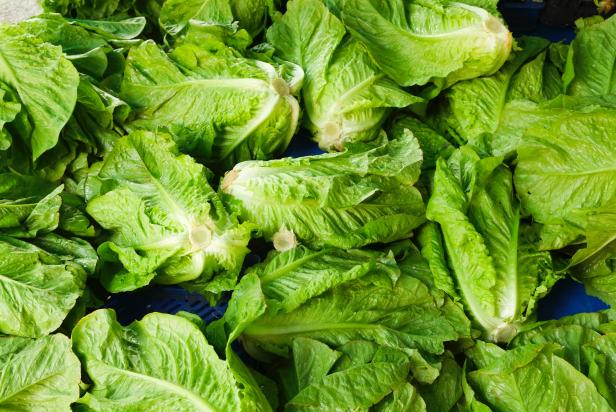How to Keep Lettuce Fresh
"Leaf" through these storage tips for crisper greens.

Getty Images
By Amanda Neal for Food Network Kitchen
Whether it’s crunchy iceberg, versatile romaine, peppery arugula or leafy spinach, lettuce is a great way to incorporate greens into your diet. However, lettuce is notorious for going bad quickly. Here’s some easy storage tips for keeping your greens fresher, longer.
Storing Heads of Lettuce
Whole heads of iceberg, romaine, butterhead (like Bibb) and red leaf lettuce are readily available at groceries stores and supermarkets because the crunchy leaves are perfect for stacking on sandwiches or serving as the foundation of salads.
Most important to note: If you purchase one of these varieties, leave the heads intact and do not wash until you’re ready to use them. Whole heads of lettuce will stay fresher much longer than chopped pieces or individual leaves.
From there, the best way to store heads of lettuce is to first remove any damaged or wilted outer leaves, then wrap in a few paper towels. Store in the crisper drawer of your refrigerator until ready to use — this drawer is designed to maintain the ideal humidity and air circulation for produce.
The notable exception to this method is iceberg lettuce, which is typically sold tightly wrapped in plastic. Keep the whole head of iceberg lettuce wrapped in its original packaging, then place in the crisper drawer until it’s time to prep and consume.
Storing Loose Leaf Lettuce
When you buy bags or boxes of loose-leaf lettuce, such as spinach, arugula and mesclun mix, it’s typically pre-washed and sorted. However, it’s a good idea to pick through the lettuce and remove any damaged leaves, then give it a good rinse to wash away dirt and potential harmful bacteria (such as E. coli). Also plan to do this for bunches of spinach, once you’ve removed the rubber band or twist-tie holding it together.
Proper air circulation and a small amount of moisture will keep your lettuce crisp and fresh. The easiest (and most effective) way to do this is to line a sturdy glass or plastic container with a few paper towels, then scatter your greens on top. Top with a matching lid and refrigerate. There should be some room in the container for the air to circulate, and the paper towels will absorb any excess moisture. Plus, a durable container with ridged sides will protect the lettuce from being squished or bruised from other refrigerated items. However, if you don’t have a similar container as described, you can use a plastic bag, just be sure to leave a small portion of it open so air can circulate.
How to Wash and Dry Lettuce
Your lettuce will most likely have dirt, sand and maybe even little critters hidden in the leaves, so it’s important to give them a proper wash, especially if you plan to eat it raw. The first step is to prep your greens, whether that means removing the leaves from a head of iceberg, chopping spinach leaves or dicing a heart of romaine into bite-size pieces. Next, fill a large bowl with cold water. Fully submerge the lettuce in the water, then gently agitate the leaves to release any debris. The dirt and sand will fall to the bottom while the lettuce floats on top. Remove the lettuce from the water, then gently and thoroughly pat dry between paper towels or spin-dry the leaves in a salad spinner.
Reviving Sad Lettuce
If you notice your lettuce is wilting, you can revive it by submerging the leaves in a bowl of ice water. Let it sit for about 5 minutes, then remove and thoroughly pat dry. This will shock and crisp up the leaves.
Shelf Life
While it will vary from one head of lettuce to another, when properly stored, leafy greens should stay fresh and crisp for 7 to 10 days. A whole head of lettuce will typically last longer than individual greens, especially tightly bound heads of lettuce, such as iceberg and endive. However, keeping these storage tips and tricks in mind, will help your greens stay fresh when salad cravings strike.
Iceberg Recipes:
Romaine Recipes:
Assorted Lettuce Recipes:
Related Links:































































